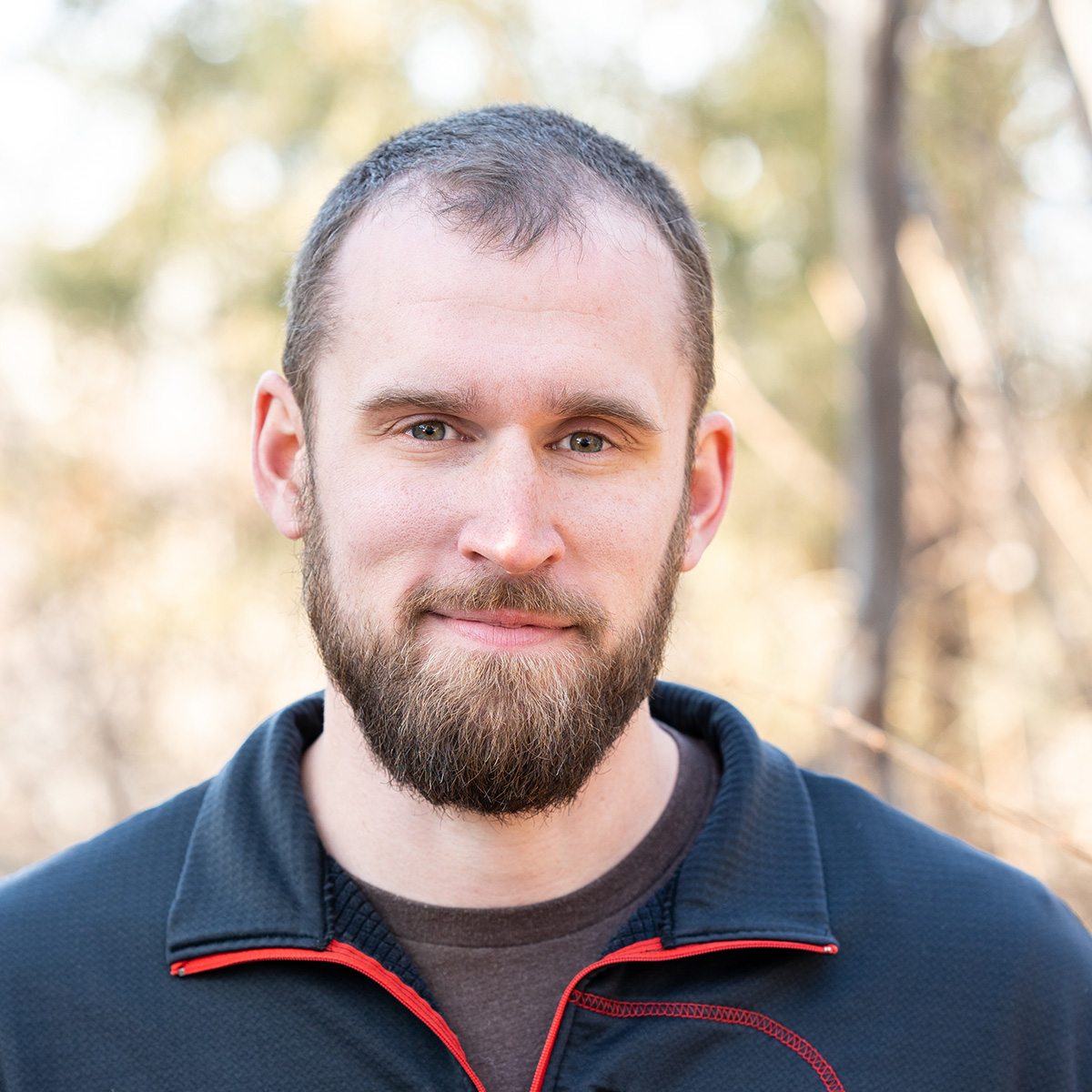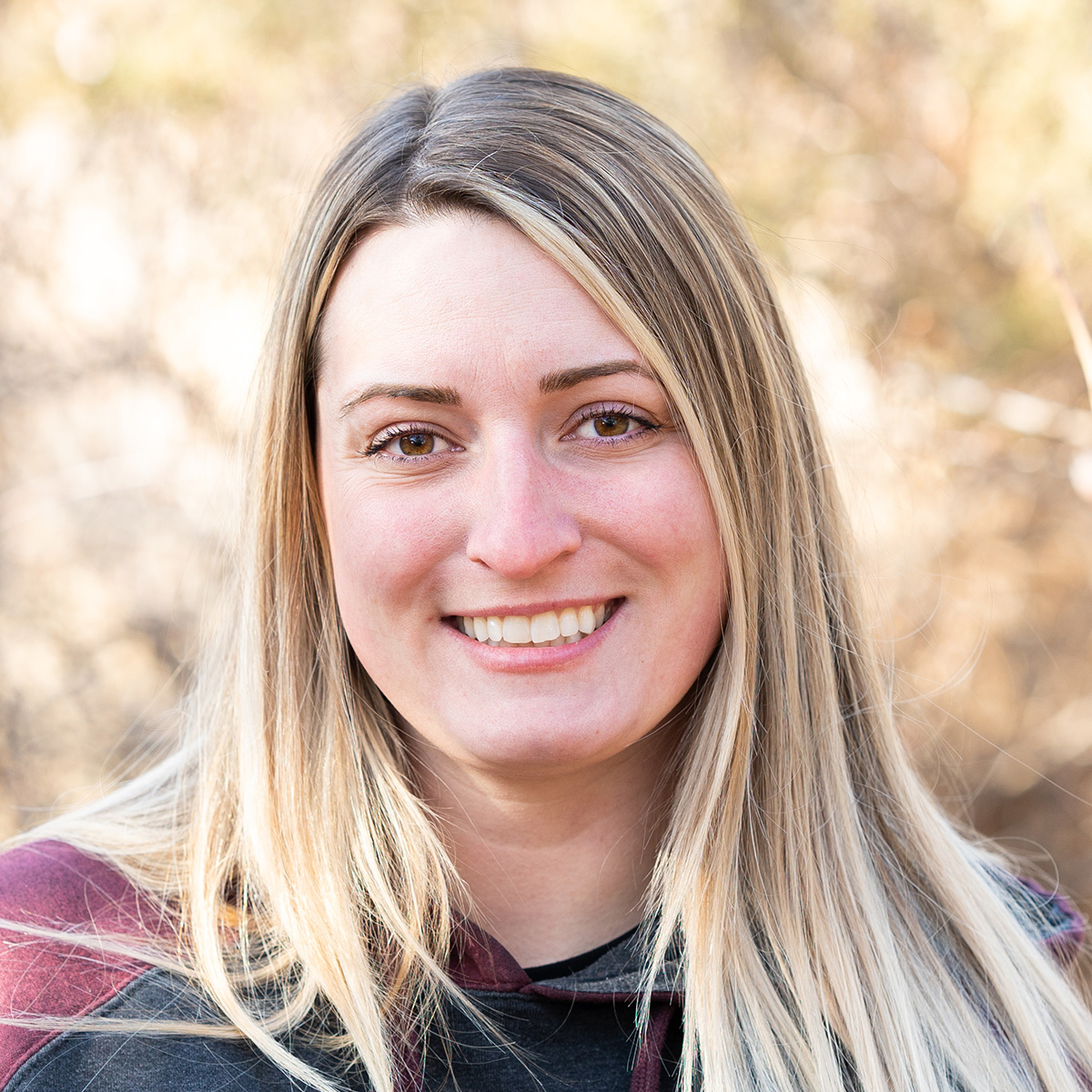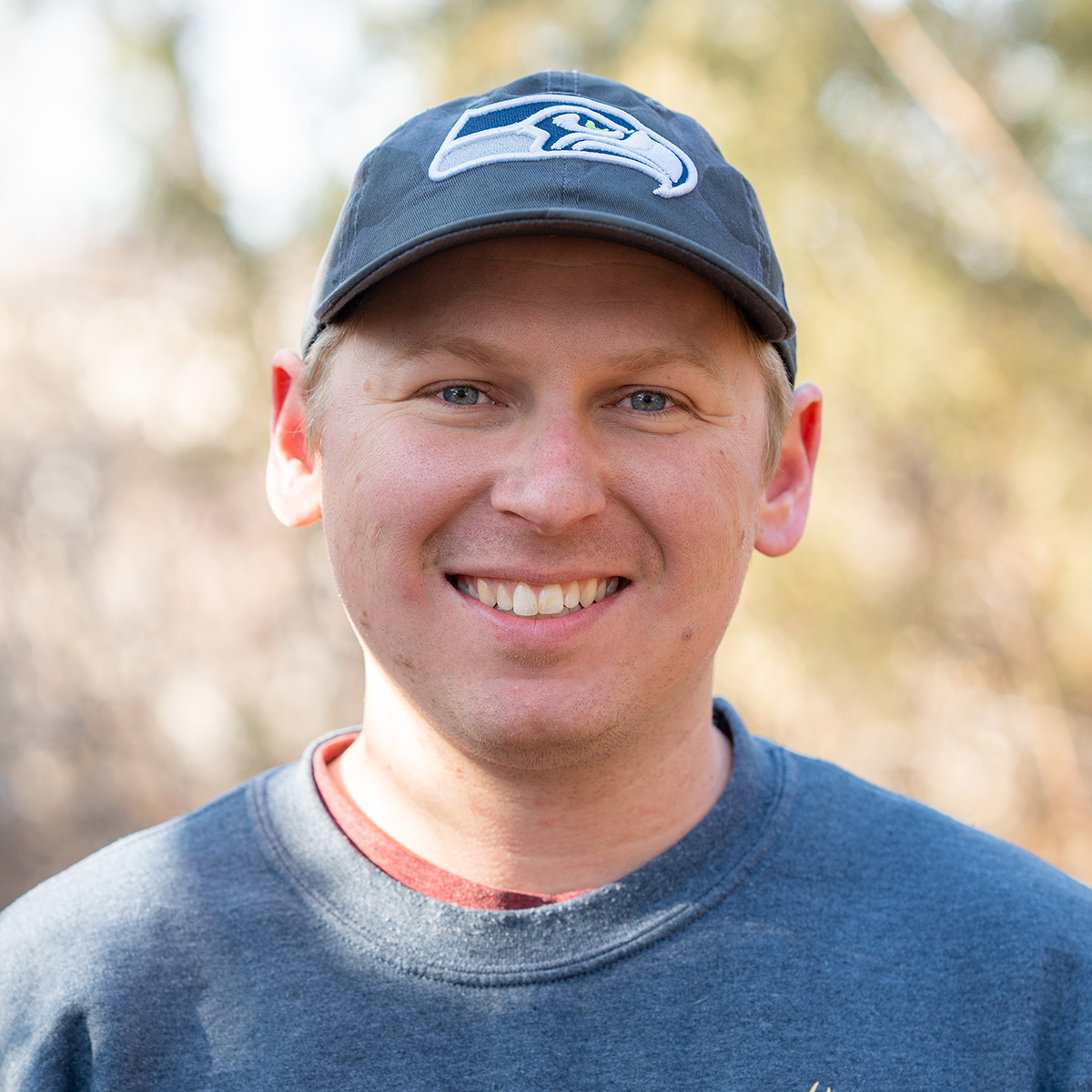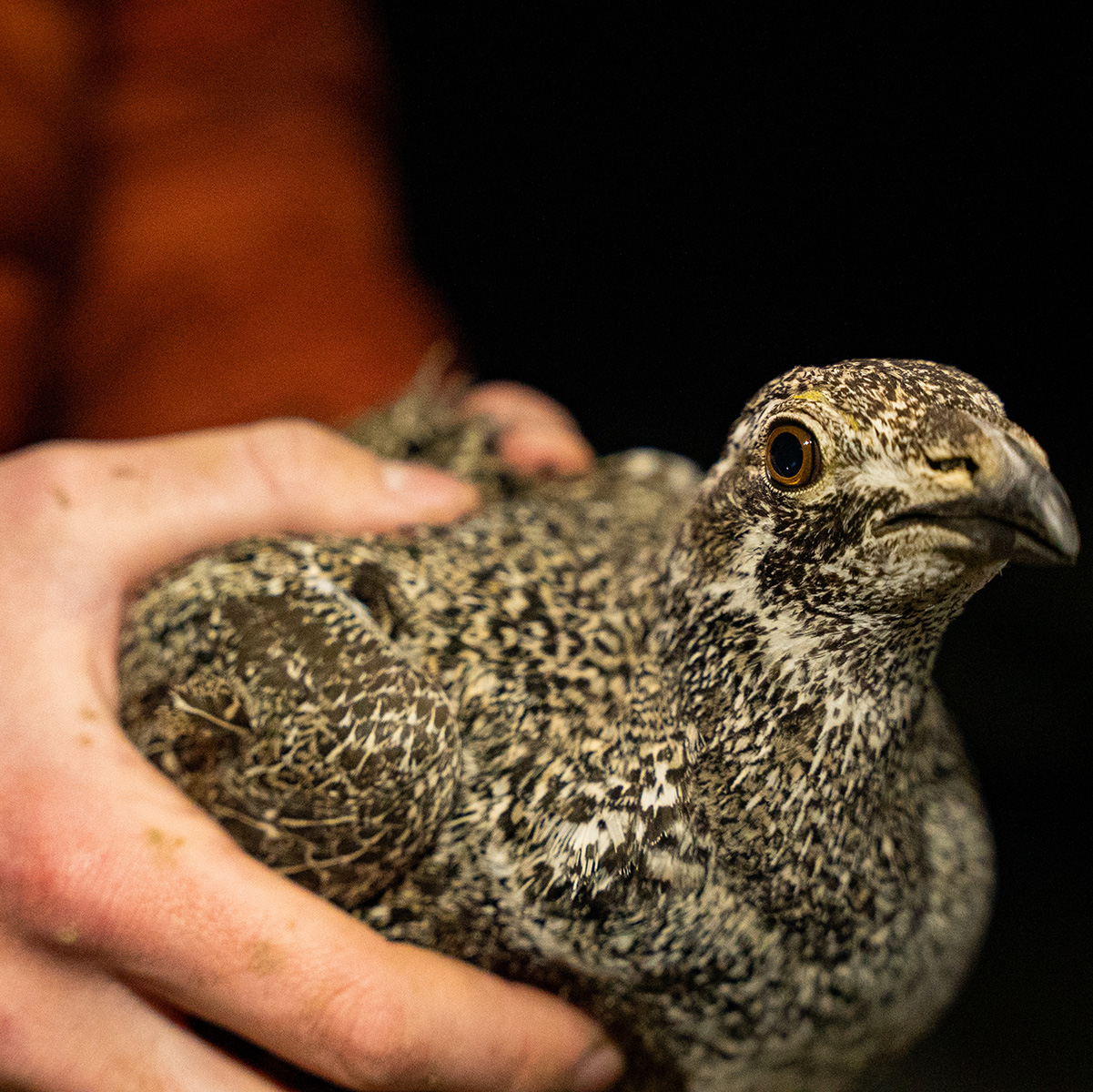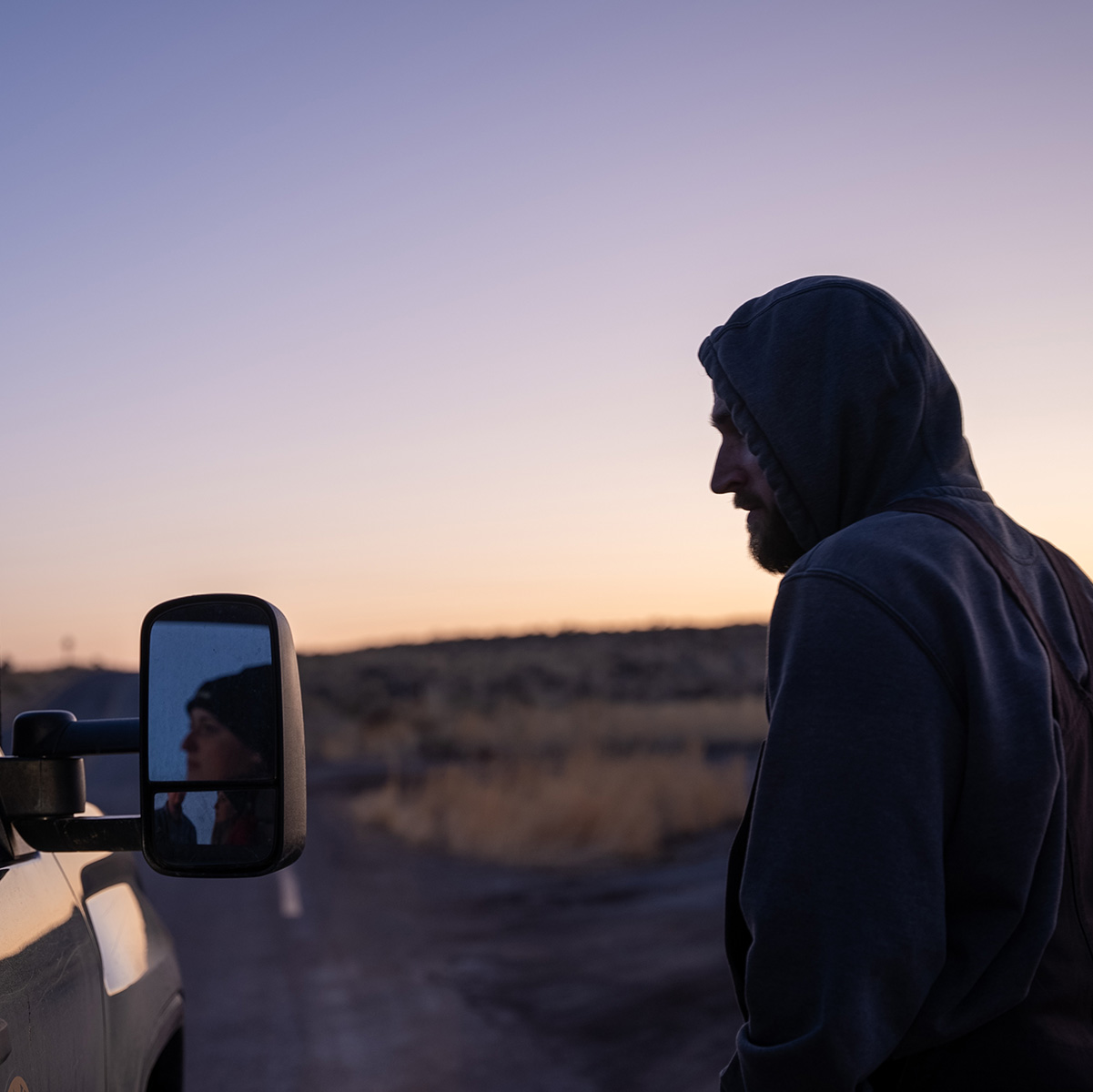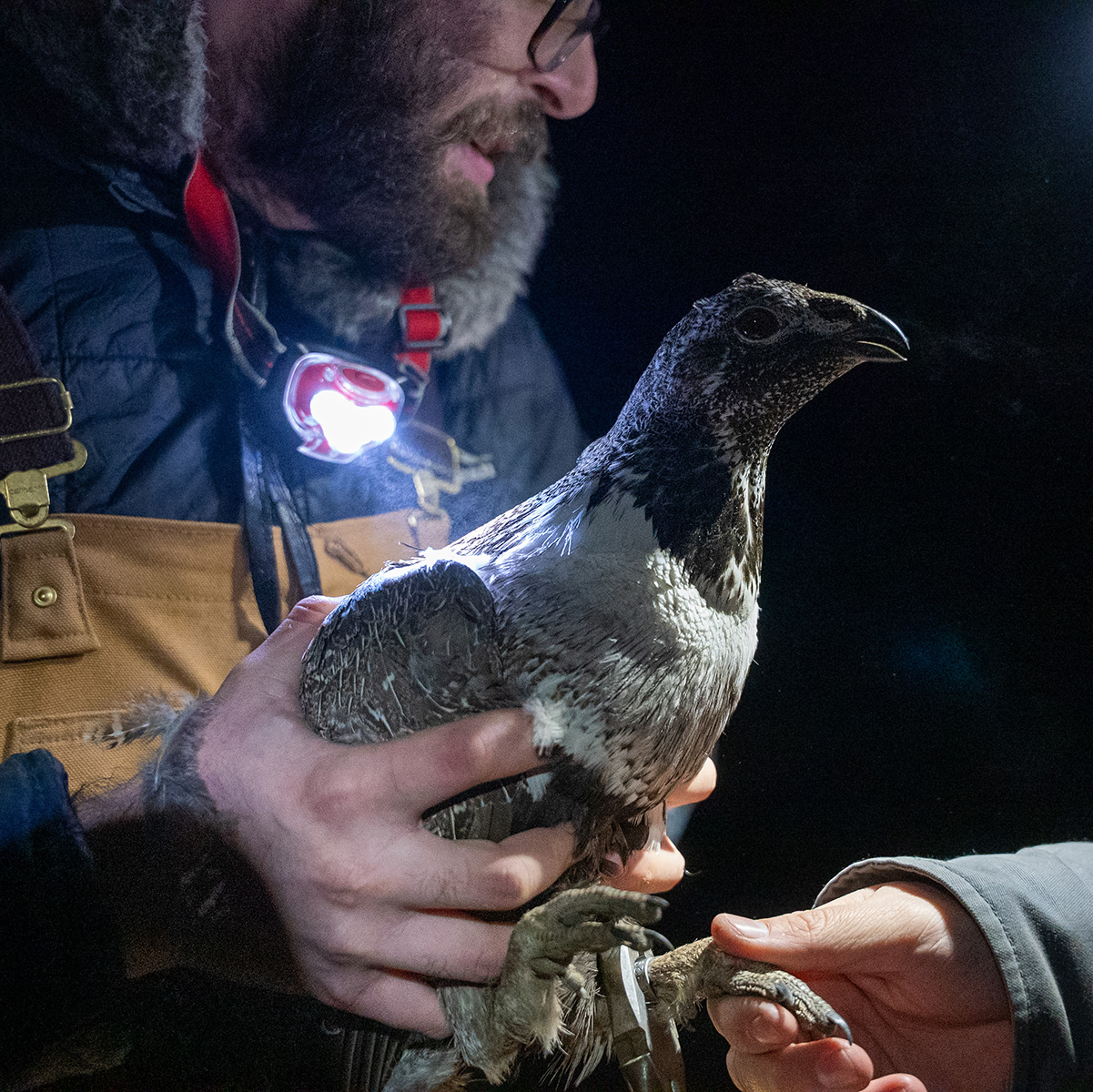Shedding New Light on Sage Grouse
Researchers Capture Sage Grouse Hens at Night for 10-Year Study
For the past several years, bird biologist Cody Tisdale has spent cold, spring nights rumbling over vast sagebrush pastures in southern Idaho looking for sage grouse hens.
He does this with an entourage of wildlife technicians employed by the University of Idaho who use ATVs and spotting scopes to locate roosting birds in their spring habitat as part of a 10-year grouse and cattle grazing study.
Tisdale oversees the capturing and radio-collaring of the grouse and later, the tracking of the birds using radio telemetry to explore the effect of cattle grazing on grouse nesting and brood survival.
Field technicians under Tisdale’s tutelage capture and collar sage grouse hens in early spring, track the hens to their nests later in the season, and document the number of successful nests and brood sizes, as well as how many sage grouse nests have been abandoned or failed. The numbers are compared to similar plots that aren’t subject to spring grazing.
“So far, we’ve found that the percentage of successful and unsuccessful nests are virtually the same whether or not the pastures are grazed,” Tisdale said.
Tisdale’s crews begin their work as birds congregate near lekking sites, usually in March. Crews of technicians, in cooperation with Idaho Fish and Game, use ATVs to bounce across likely sage grouse habitat at night.
Dressed in heavy coveralls, layers of coats and jackets, mittens and woolen hats to keep warm as temperatures hover in the teens and low 20s, the technicians cover hundreds of acres per night shining spotlights ahead of the ATVs. When the lights reflect in the eyes of roosting hen grouse, the technicians use nets to capture the birds, fit them with radio collars, measure and weigh them before releasing them.
The work continues for weeks until lekking ends and the hens disperse.
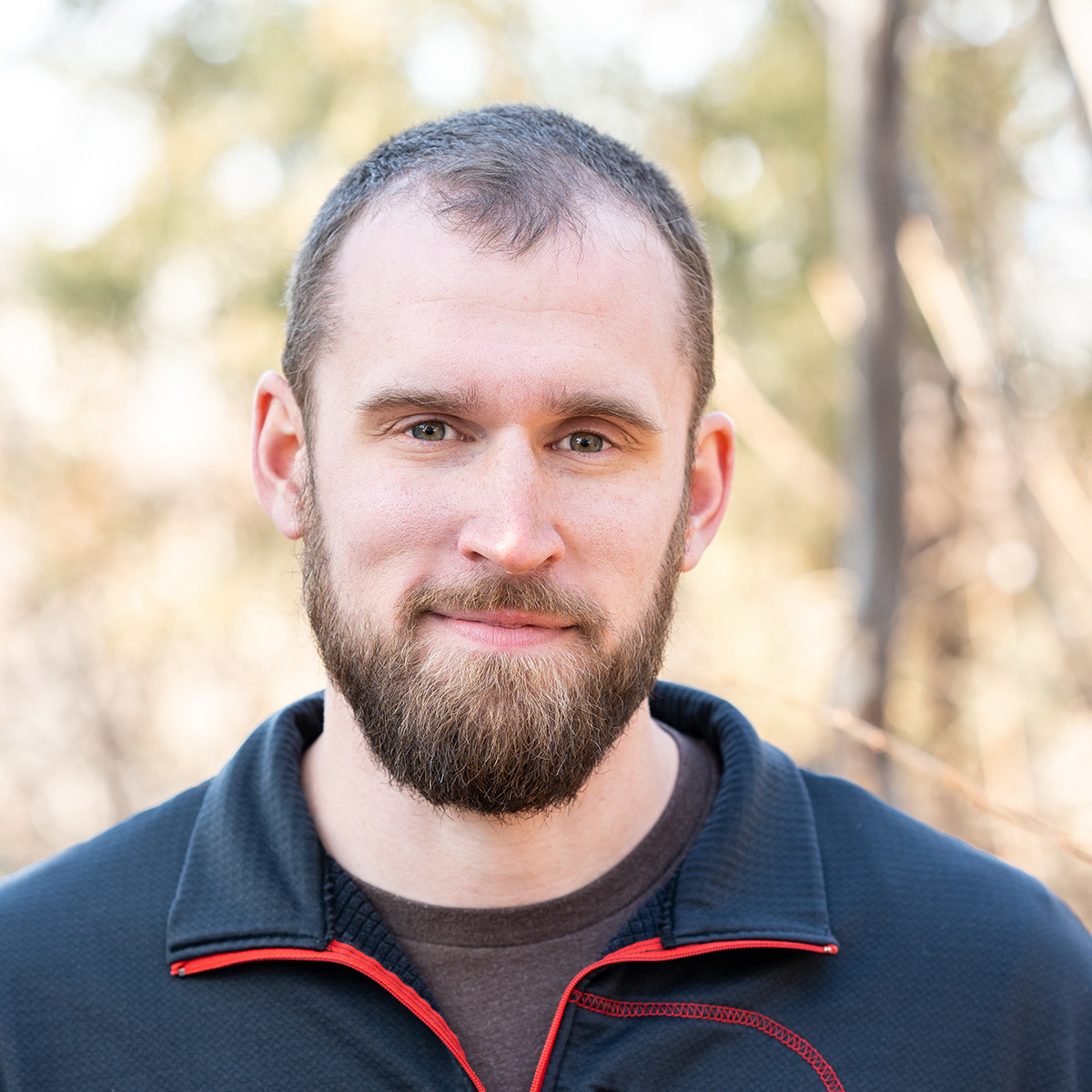
The Lek
The spring display of the greater sage grouse in the high desert is a heartbeat pulsing through icy mornings before sunrise, building to a crescendo.
Sitting in an Idaho Dept. of Fish and Game pickup — the department donates the use of equipment including ATVs, trailers and pickup trucks to the U of I grouse and grazing project — biologist Dustin Brewster, one of Tisdale’s wildlife technicians uses binoculars to watch leks for collared hens.
As the first rays of sun paint the snowy sage lands orange, and temperatures creep into the teens, Brewster parks near a well-used lek, to watch and listen as greater sage grouse roosters expand sacks in their chests like yellow balloons before quickly spilling the air. The released air fills the otherwise silent landscape with a soft and harmonious booming.
It’s going to have ramifications on rangeland across the West. Cody Brewster. U of I graduate. Wildlife technician.
“It almost sounds like someone gulping, but it’s not really that either,” said Brewster. “You know it when you hear it, but it’s hard to describe.”
The lek appears as an open area, sparsely covered with sage, compared to its more thickly covered surroundings. Roosters fly in to the lek as the day brightens, with hens following. “Often, leks are places cattle have trampled down,” said Brewster. “This is a well-known lek that was once a watering trough.”
Brewster’s team of scientists catch, collar and follow sage grouse across 6,500 acres at Brown’s Bench south of Twin Falls using radio telemetry. This is one of five sites in U of I’s grouse and grazing project where biologists monitor sage grouse.
As part of this decade-long study, Brewster’s team seeks to add to the dearth of scientific data so range managers can make informed land-use decisions. Brewster applied to join the project, he said, because of its significance.
“It’s going to have ramifications on rangeland across the West, not just in Idaho,” Brewster said. “The questions we’re trying to answer about cattle grazing and grouse have a lot of public interest, and interest from wildlife agencies.”
The future use of federal rangelands depends, in part, on what researchers learn about how grouse and cows interact, Brewster said.
“It’s good to be working on a project that has these kinds of real-world applications,” he said. “And it’s good to know that what you’re doing will safeguard the health of the ecosystem going forward.”
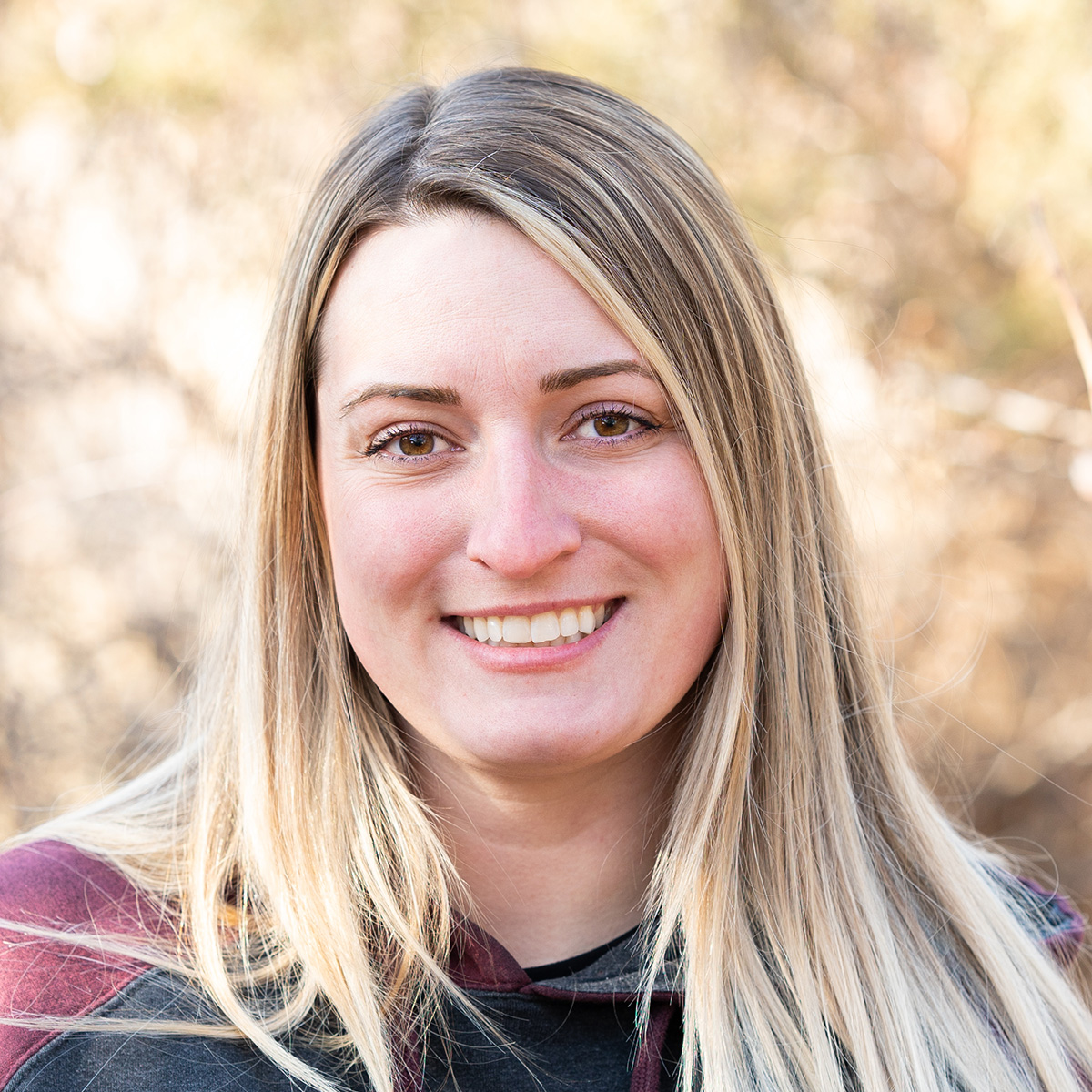
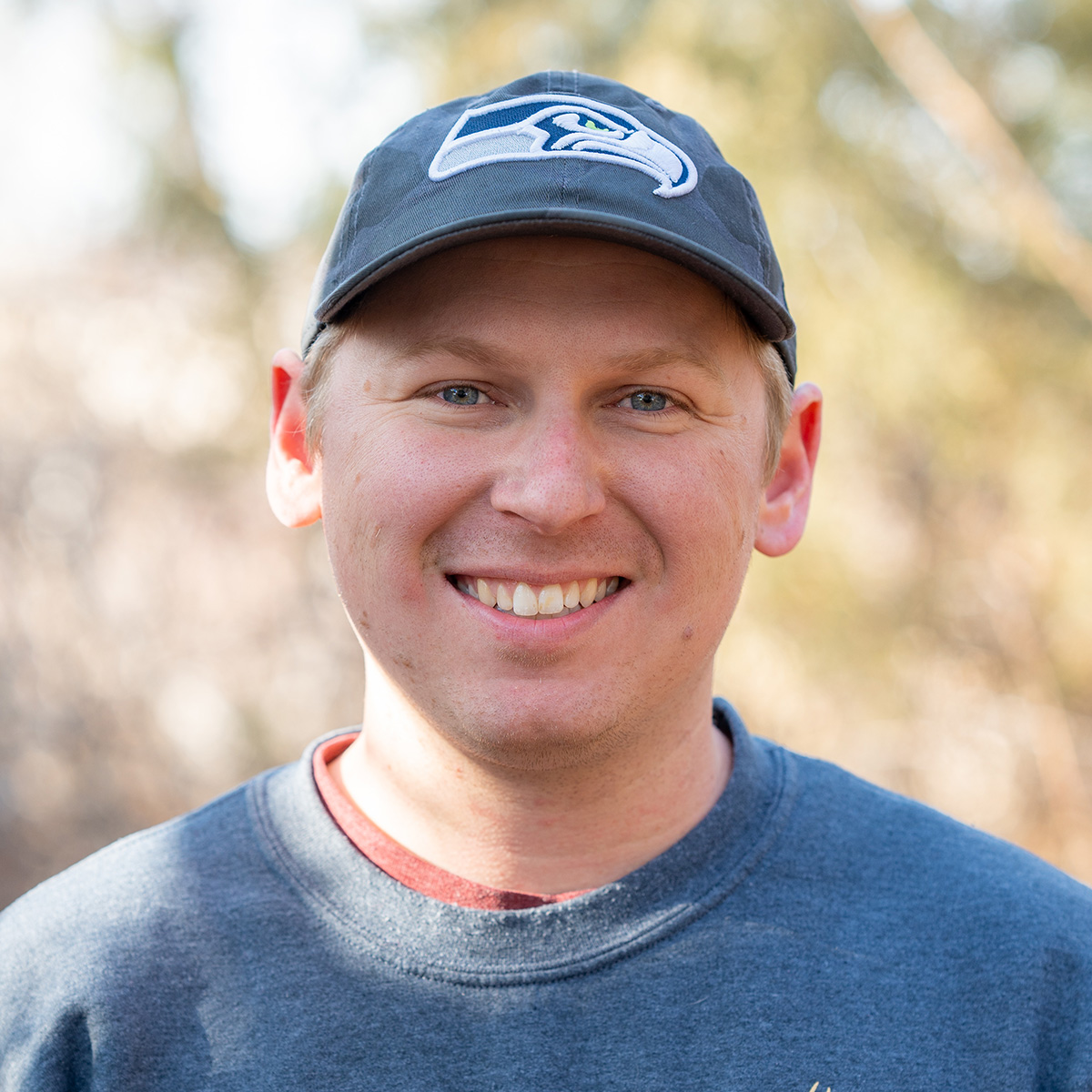
University of Idaho Grouse and Grazing Project Field Journal
University of Idaho researchers catch sage grouse at night to gather nesting data to help determine whether sage grouse and cattle grazing on BLM land is compatible.
Article by Ralph Bartholdt, University Communications
Photos by Garrett Britton, University Visual Productions
Video by Garrett Britton, University Visual Productions
Published in October, 2023







